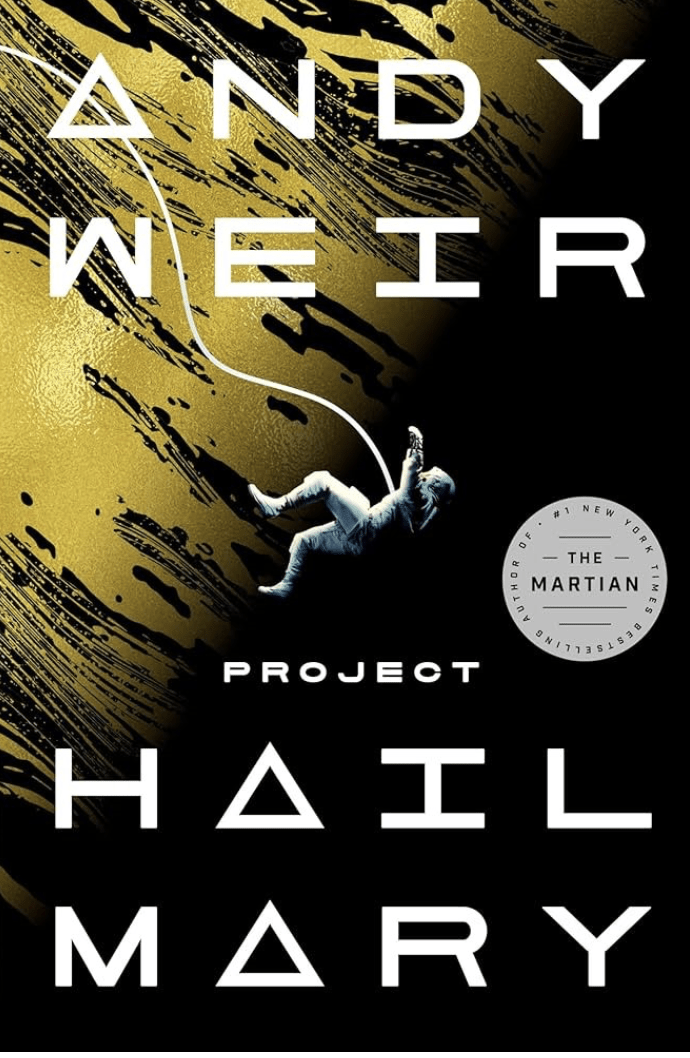Project Hail Mary
The idea that aliens, if proven to exist, would resemble something like an octopus or spider has always irked me. Why would an interstellar species from an environment completely unlike anything we know on earth evolve to resemble creatures like ours?
Is it that, from the human perspective, octopuses are the most alien-like species our imaginations have access to? Strikingly intelligent, capable of changing hue on command and fitting through holes the size of bottle caps — it would make sense why a science fiction writer may turn there for inspiration.
And spiders — do we use them in place of extraterrestrial life simply because they’re “scary” and unsettling? Or perhaps anything with more than four legs is deemed strange and therefore akin to an alien.
I was skeptical when I realized “Project Hail Mary,” a science fiction novel by Andy Weir, followed the spider-alien trend, but my misgivings were quickly rectified after just a few pages.
The science of “Project Hail Mary” works within the rules and bounds Weir set for himself, giving him opportunities to show creativity in solutions for seemingly impossible problems.
The first-ever confirmation of life outside of Earth didn’t spark a reaction of wonder or excitement but dread from the masses. Astrophage, Greek for “star eater,” was discovered as an unexplained arc trailing from the sun to planet Venus. It quickly became clear that millions of microscopic organisms were somehow diminishing the sun’s energy, and the same was happening to nearby stars as well.
Readers follow Ryland Grace, a scientist who wakes up on a spaceship with no memory of how he got there or why, as he slowly uncovers the truth about his past and how to stop the Astrophage cataclysm in a last-ditch effort to save humanity, a Hail Mary attempt.
Grace quickly realizes he is not alone in his mission when an unidentified ship makes contact. Like Grace, the five-legged headless spider alien aboard was the lone survivor of his ship. The human scientist and alien with an affinity for engineering team up to try and save both their dying worlds, while learning about each other’s respective civilizations in the meantime.
The reason I don’t mind the spider-like appearance of Rocky, the alien of “Project Hail Mary,” is because Weir expertly shows through natural storytelling how the species evolved to his planet’s unique conditions. Rocky “sees” through the vibrations of sound because his planet Erid is too dark for light to be useful. He communicates using an array of complex notes that Grace must decipher.
Due to the fact that Rocky can’t “see” color, breathes ammonia and doesn’t speak English, Weir had to come up with some pretty creative solutions to allow the two of them to communicate and eventually, become friends.
“I want to spend the rest of my life studying Eridian biology! But I have to save humanity first. Stupid humanity. Getting in the way of my hobbies.”
I admire that Weir never worked around some of the more difficult questions with, “It’s fiction, it doesn’t need to make sense.” He always described the reason the solutions worked with fictional explanations that might be far-fetched but were rooted in real science.
For a book about a topic so grim, it had a lot of really good humor. Grace and Rocky are loveable characters with a light-hearted narrative that leads to some great comical moments. As Rocky said, “I am scary space monster. You are leaky space blob.”
The story doesn’t come without deeper themes of self-discovery.
Grace struggles with the concept of selflessness and what it means to be a hero throughout his journey. He slowly gets his memories back, which leads the audience to wonder how he ended up alone on the ship trying to save the world.
During the present time on the spaceship, Grace thinks himself a hero for volunteering to go on such a grave suicide mission with the intent to save humanity. But it becomes clear during his flashbacks that he may not have been the most heroic type during his life on Earth. More often than not, the regrasping of his memories leads him to more questions than answers.
Weir wraps the book up in an ending that is satisfying in both the aspect of character growth and scientific discovery. The path of the plot caught me by surprise, but it undeniability showed that our hero learned the value of selflessness and embodied it to the end.
“Project Hail Mary” is an enticing novel that demands the readers imagination to blossom. With many “Aha!” moments and original themes to go around, this book has made it to my top favorites without a doubt, even if the alien may resemble a spider.

